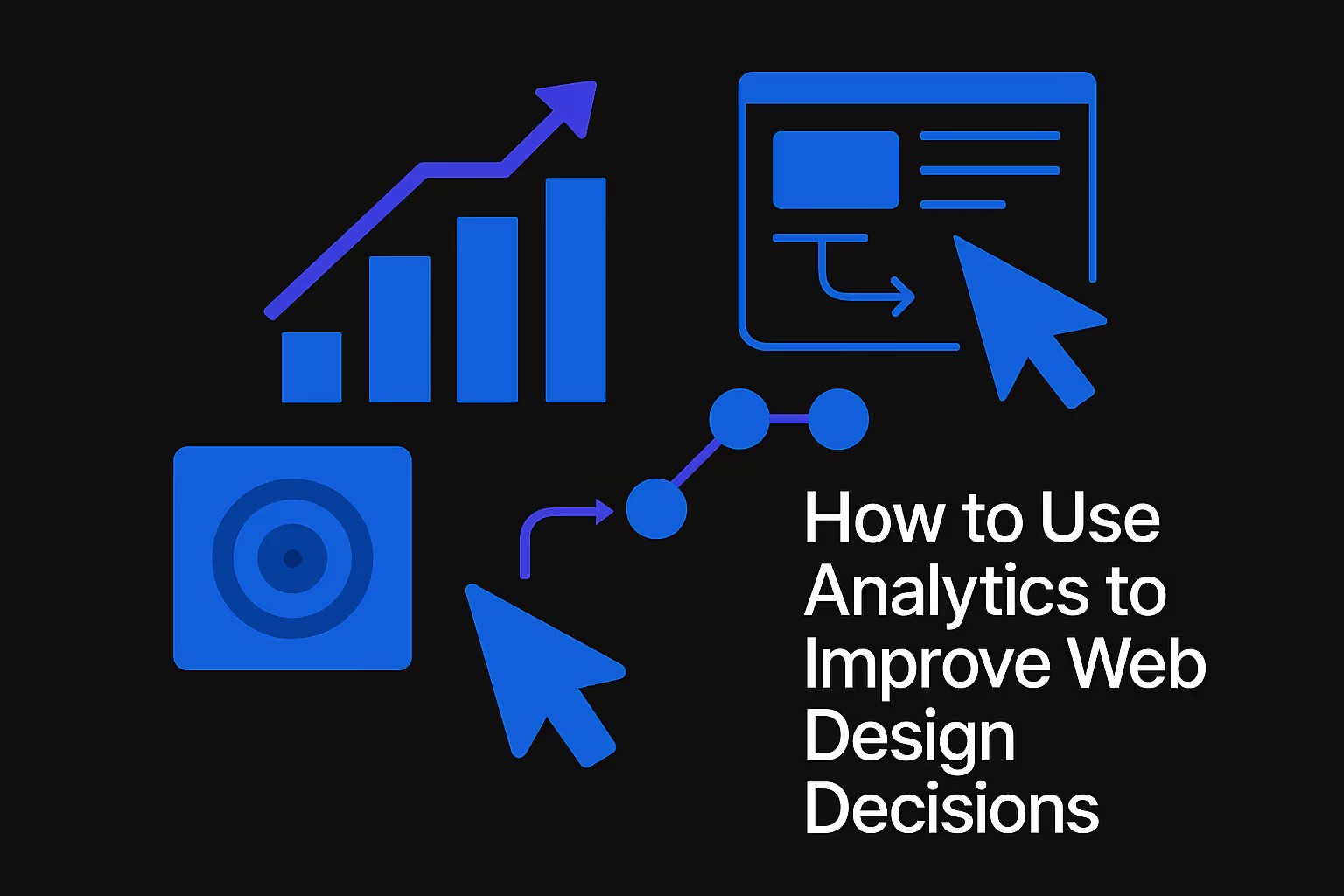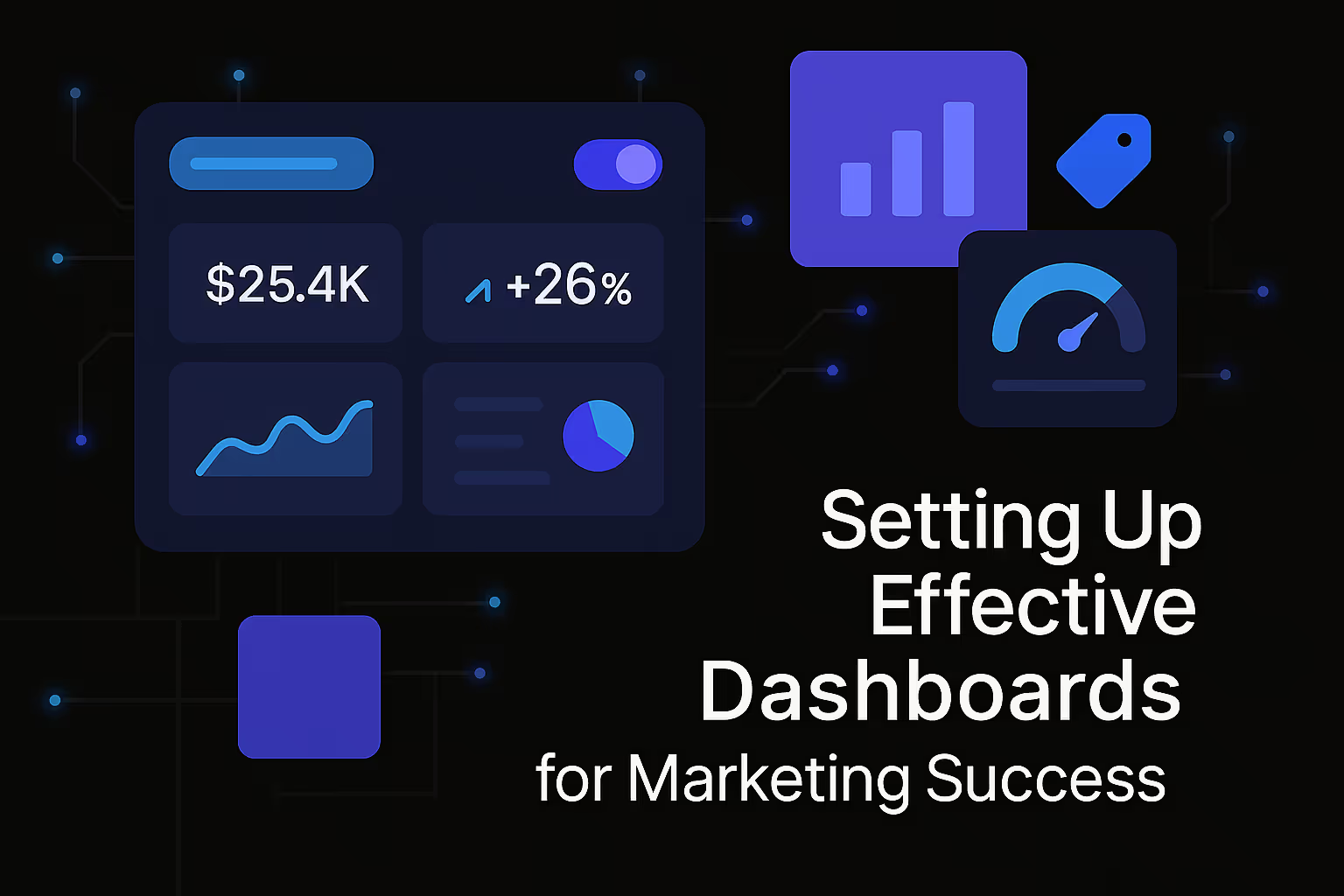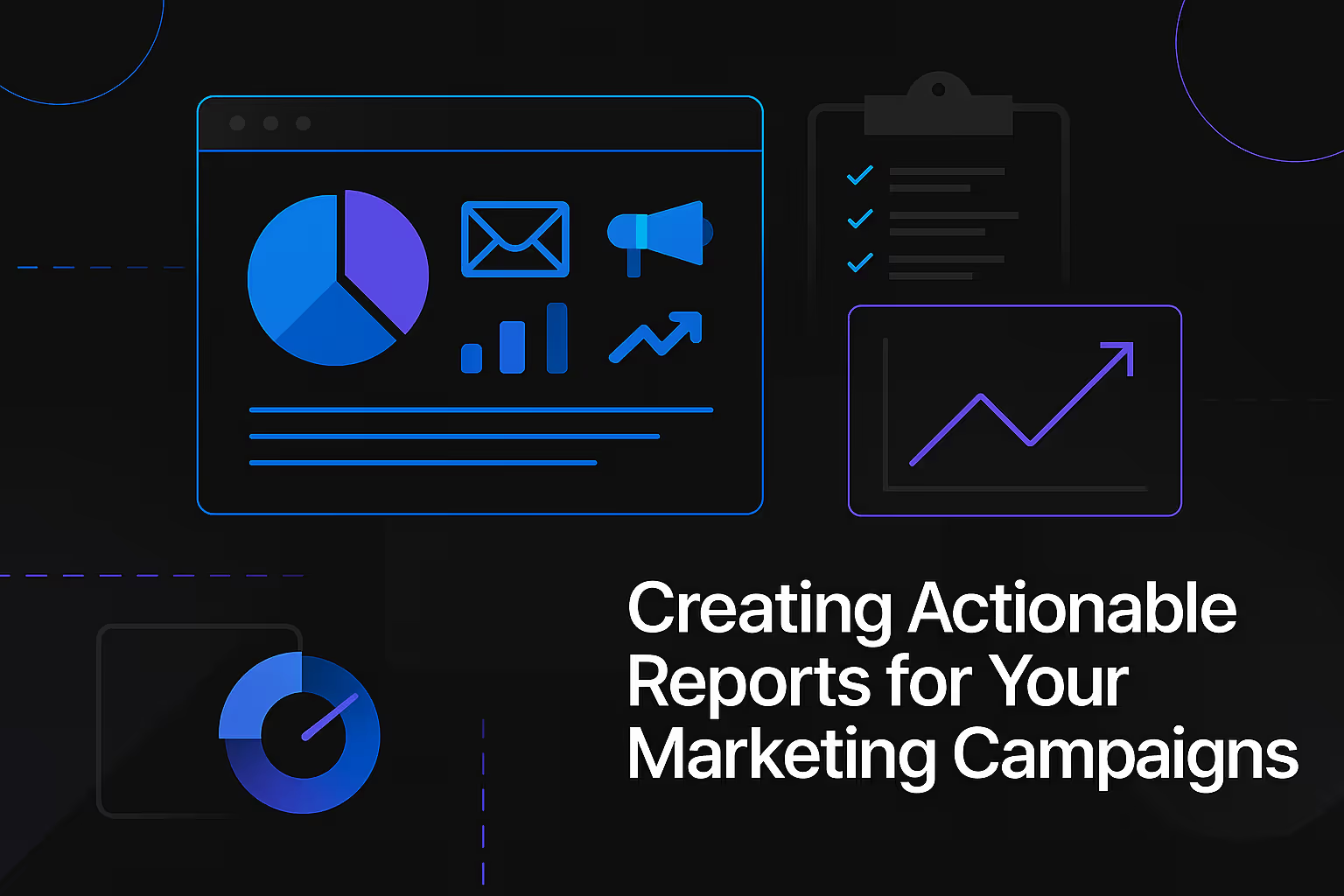How to Use Analytics to Improve Web Design Decisions

In the rapidly evolving digital landscape, a website is far more than just an online brochure; it is a dynamic interface, a critical touchpoint, and often the primary interaction hub between a brand and its audience. For too long, web design has been perceived through a largely aesthetic lens, prioritizing visual appeal above all else. While an attractive website is undoubtedly important, true web design excellence in the modern era transcends mere looks. It is about crafting experiences that are not only visually engaging but also intuitively functional, highly efficient, and ultimately, deeply impactful in achieving specific business objectives. The shift from design as an art form to design as a data-backed science marks a pivotal evolution, underscoring the indispensable role of robust web analytics.
Gone are the days when design decisions could be based solely on intuition, personal preference, or fleeting trends. The digital realm provides an unparalleled opportunity to meticulously track, measure, and understand how users interact with a website. This wealth of quantitative and qualitative data, when properly harnessed through analytics, transforms guesswork into informed strategy. It empowers designers and marketers alike to move beyond assumptions, pinpointing exactly what resonates with their audience and what falls short. By systematically collecting and interpreting user behavior data, businesses can undertake a continuous process of optimization, ensuring their web presence is not just good, but truly exceptional in driving user engagement, conversions, and sustained growth.
The Indispensable Role of Analytics in Modern Web Design
The fundamental purpose of any website is to serve its users effectively, guiding them toward their goals while simultaneously fulfilling the strategic objectives of the business. Analytics provides the crucial bridge between these two facets, offering objective insights into how well a design is performing against its intended purpose.
Beyond Aesthetics: Design as a Performance Driver
At its core, web design is intrinsically linked to performance. A beautifully designed website that fails to engage visitors, leads to high bounce rates, or obstructs conversion paths is, by definition, a poorly performing website. Modern web design is therefore not just about creating something aesthetically pleasing; it is about engineering a user experience that propels visitors seamlessly through their journey, culminating in desired actions. This demands a proactive, data-informed approach, where every design element – from navigation structures and call-to-action buttons to content layout and imagery – is a deliberate choice optimized for user interaction and business outcomes.
Consider the layout of a product page on an e-commerce site. An intuitive designer might arrange product images, descriptions, and purchase buttons based on what they believe looks best or is most logical. However, analytics might reveal that users are consistently overlooking key information, struggling to find the 'add to cart' button, or abandoning the page before reaching the price. This data doesn't critique the aesthetics; it exposes functional shortcomings. By analyzing user behavior, designers can identify these friction points and iterate on the design to enhance clarity, improve discoverability, and streamline the path to purchase. The design then becomes a powerful instrument for achieving concrete results, directly contributing to conversion rates and revenue, rather than merely serving as a decorative facade. It is this marriage of creative vision with empirical evidence that defines truly effective web design today.
Shifting from Intuition to Insight: The Data-Driven Paradigm
The reliance on intuition, while valuable in initial ideation, carries inherent risks in the execution of web design. What feels right to a designer may not always align with the actual behavior or preferences of the target audience. The data-driven paradigm represents a fundamental shift away from subjective assumptions towards objective, verifiable facts. Analytics platforms provide the raw intelligence needed to understand user interactions at a granular level, revealing patterns and anomalies that would otherwise remain hidden.
For instance, a designer might intuit that a prominent banner advertisement is the most effective way to promote a new service. However, analytics might show that users are quickly scrolling past it, or even worse, that its placement is leading to an increased bounce rate because it creates an unfavorable first impression. Conversely, data might highlight that a less prominent, contextually relevant link embedded within content is generating significant click-throughs. These insights allow for informed adjustments, enabling designers to optimize for genuine user engagement rather than perceived effectiveness. By grounding design decisions in concrete data, businesses not only improve the efficacy of their web assets but also foster an environment of continuous learning and adaptation. This commitment to evidence-based design builds trust with the audience by consistently delivering helpful and reliable experiences, inherently aligning with the principles of expertise and trustworthiness that Google values in its search rankings. It’s about creating a user-first experience, where every element is refined to serve the human visitor, making the website not just a digital presence, but a truly effective and high-performing online asset.
Key Web Analytics Metrics and Their Design Implications
To effectively use analytics for web design, it is crucial to understand which metrics offer the most pertinent insights into user behavior and how those insights translate into actionable design modifications. A holistic view of data, encompassing traffic, engagement, and conversion metrics, provides a comprehensive picture of a website's performance.
Understanding User Behavior through Traffic Metrics
Traffic metrics provide a foundational understanding of who is visiting your site and how much attention they are giving to different pages. These numbers are often the first indicators of broader design success or failure.
Page Views and Unique Visitors: These are often the most basic metrics, indicating the sheer volume of activity on your site. Page views represent the total number of times pages were viewed, while unique visitors count distinct individuals. A high number of page views on a particular section of your site, coupled with a significant number of unique visitors to those pages, can signal successful content or a highly intuitive navigation path leading users to desired information. Conversely, consistently low page views on critical pages might suggest discoverability issues or a lack of compelling content, both of which can be addressed through design improvements, such as enhanced internal linking strategies or more prominent navigation elements. By observing which pages capture the most attention, designers can learn what design layouts or content formats resonate most effectively, and apply those successful elements to less popular areas.
Bounce Rate: The bounce rate is a critical metric that signifies the percentage of single-page sessions on your website. In essence, it measures how often a user visits one page and then leaves without interacting further. A high bounce rate, especially on landing pages or homepages, can be a glaring red flag for design. It might indicate that the page's design is confusing, the content is irrelevant to what the user expected, the site loads too slowly, or the overall aesthetic is off-putting. Design interventions to combat a high bounce rate could include optimizing above-the-fold content for immediate clarity and value, improving site speed, ensuring mobile responsiveness, or refining the initial visual impact of the page to encourage further exploration. Each design choice should be geared towards immediately addressing user intent and fostering a positive first impression that encourages deeper engagement.
Time on Page and Session Duration: These metrics offer insights into user engagement. Time on page measures the average amount of time users spend viewing a specific page, while session duration calculates the average time spent across an entire visit. Higher values generally indicate that users are finding the content valuable and are engaged with the design. Conversely, low times on crucial pages could suggest that users are not finding what they need, the content is difficult to consume due to poor formatting, or the overall design is unappealing, leading them to quickly exit. Designers can leverage this data to optimize content readability through improved typography, strategic use of white space, integration of multimedia elements, and clear hierarchical organization of information. If a complex article has a low time on page, for example, it might indicate that users are overwhelmed, prompting a redesign that breaks down content into smaller, more digestible sections or introduces interactive elements to foster deeper engagement.
Traffic Sources: Understanding where your visitors originate (e.g., organic search, social media, direct, referral) can profoundly influence design decisions tailored to specific audiences. If a significant portion of traffic comes from mobile social media, for instance, prioritizing a highly responsive, touch-friendly design optimized for quick scanning becomes paramount. If direct traffic is high, indicating returning users or brand recognition, the design might focus on streamlined navigation for loyal customers. By recognizing the primary entry points and the typical behavior of users from different sources, designers can create tailored experiences that anticipate user needs and optimize the landing experience for each segment, thereby improving overall user satisfaction and performance.
Mapping User Journeys with Flow and Navigation Data
Beyond individual page performance, understanding how users navigate through a website is crucial for optimizing the entire user journey. This involves analyzing the paths users take and identifying areas of friction or abandonment.
User Flow and Navigation Paths: Analytics tools allow you to visualize the journey users take through your website, from their entry page to their exit. This "user flow" data is invaluable for understanding how intuitive your site's navigation truly is. Are users following the intended paths to conversion? Are they getting lost or looping back repeatedly? If the data reveals convoluted paths, frequent backtracking, or unexpected detours, it signals a need for design intervention. This might involve simplifying main navigation menus, restructuring information architecture, introducing clearer calls to action, or adding contextual internal links to guide users more effectively. For instance, if users frequently drop off before reaching a specific product category, redesigning the homepage’s category links to be more prominent or descriptive could dramatically improve user progression through the sales funnel. The goal is to design a seamless, logical journey that minimizes cognitive load and maximizes efficiency for the user.
Exit Pages: Identifying the pages where users frequently leave your site can highlight critical design issues. While some exit pages are natural (e.g., a "thank you" page after a conversion), unexpected high exit rates on pages intended for deeper engagement or further progression are problematic. For example, if a product detail page consistently has a high exit rate without a corresponding conversion, it suggests that the design of that page—perhaps lacking compelling imagery, clear pricing, or readily available support information—is failing to encourage the next step. Analyzing these exit pages requires a deep dive into their specific design elements to uncover potential usability issues, missing content, or a lack of clear calls to action. Redesigning these pages to address user queries, improve content clarity, or offer clearer paths to other relevant content can significantly reduce unintended exits and improve overall site stickiness.
Conversion Metrics: The Ultimate Design Validation
While traffic and engagement metrics tell you what users are doing, conversion metrics tell you how effectively your website is achieving its business goals. These are often the ultimate arbiter of a design's success.
Conversion Rates: The conversion rate measures the percentage of website visitors who complete a desired action, such as making a purchase, filling out a form, or downloading a resource. This metric directly validates the effectiveness of your web design in facilitating business objectives. A low conversion rate on a critical goal page points to fundamental design flaws within the conversion funnel. This could involve issues with the clarity of calls to action, the placement of forms, the ease of checkout processes, or even the trustworthiness conveyed by the page's design. By continuously monitoring conversion rates and attributing changes to specific design modifications, businesses can scientifically optimize their websites. For example, A/B testing different button colors, microcopy for call-to-actions, or form layouts, and then measuring their impact on conversion rates, provides empirical evidence for which design elements are most persuasive. This direct feedback loop allows for iterative improvements that directly impact the bottom line.
Funnel Drop-offs: Conversion funnels represent the series of steps a user takes to complete a goal. Analytics allows you to visualize these funnels and pinpoint exactly where users are abandoning the process. If a significant percentage of users drop off at a particular stage – say, during the shipping information entry in a checkout process, or at a specific point in a multi-step sign-up form – it strongly suggests a design or usability issue at that precise point. The design team can then focus their efforts on redesigning that specific page or element to reduce friction, simplify the process, or address any potential points of confusion. This targeted approach to design optimization, informed by specific funnel analytics, ensures that resources are allocated to the areas that will yield the most significant improvements in conversion efficiency. By addressing these critical drop-off points, design directly contributes to a higher rate of successful goal completion.
Tools and Techniques for Data-Driven Design Optimization
Leveraging analytics to improve web design requires not only an understanding of key metrics but also proficiency with the tools and techniques that allow for deep analysis and effective experimentation.
Harnessing the Power of Google Analytics
Google Analytics is an indispensable tool for any data-driven web design strategy, serving as the foundational platform for understanding user interactions. It offers a vast array of reports that provide insights into audience demographics, acquisition channels, on-site behavior, and conversion performance. For designers, focusing on the "Behavior" and "Conversions" sections is particularly crucial. The Behavior Flow report, for instance, visually maps user paths through the site, allowing designers to identify popular content sequences and reveal unexpected navigation patterns or points of abandonment. The Site Content reports provide detailed data on individual page performance, highlighting pages with high bounce rates or low time on page, thereby signaling areas ripe for design improvements.
Furthermore, setting up Goals within Google Analytics is paramount. Goals transform raw interaction data into measurable business outcomes, allowing designers to directly see the impact of their changes on key performance indicators like form submissions, downloads, or completed purchases. By segmenting data based on device type, user location, or traffic source, designers can also uncover specific design challenges or opportunities for different user groups, ensuring that design modifications are precisely targeted and yield the greatest impact on user experience and business objectives.
Visualizing User Interactions: Heatmaps and Session Recordings
While Google Analytics provides quantitative data on what is happening on your site, tools like heatmaps and session recordings offer invaluable qualitative insights into why it's happening. These tools bring user behavior to life, making it easier to identify design shortcomings that might not be immediately apparent from numbers alone.
Heatmaps graphically represent user interactions on a page, using color gradients to indicate areas of high or low activity. Click maps show where users click on a page, revealing if crucial elements are being overlooked or if non-clickable elements are being mistaken for interactive ones. Scroll maps illustrate how far down a page users scroll, indicating whether important content is buried below the fold or if users are abandoning long pages prematurely. For designers, heatmaps are a treasure trove. They can expose design inefficiencies such as: a call-to-action placed in a low-visibility area, images that distract from key content, or entire sections of a page that are completely ignored. By observing these visual patterns, designers can make informed decisions about element placement, content prioritization, and visual hierarchy to ensure that users interact with the page as intended.
Session recordings, sometimes called session replays, take this visualization a step further by recording actual user sessions, allowing designers to watch a video playback of a user's journey through the website. This provides an unvarnished view of how real users interact with your design, revealing moments of confusion, frustration, or hesitation. You can observe mouse movements, clicks, scrolls, and form interactions, gaining profound empathy for the user experience. For example, a session recording might show a user repeatedly trying to click on an unclickable image, struggling to find the navigation menu, or encountering a bug in a form submission. These observations are incredibly powerful for identifying specific usability issues that quantitative data might only hint at. They allow designers to pinpoint exact pain points and implement targeted design solutions that directly address user frustration and streamline their experience.
Strategic Experimentation: A/B Testing and Multivariate Testing
Once analytical insights have highlighted areas for improvement, A/B testing and multivariate testing become essential tools for scientifically validating design changes. These methods allow you to compare different versions of a page or element to determine which performs best against specific goals.
A/B testing, also known as split testing, involves creating two versions of a web page or a specific design element (A and B) and showing them to different segments of your audience simultaneously. For example, you might test two different versions of a call-to-action button – one with a red color and the other with a green color – to see which one generates more clicks or conversions. The traffic is split equally between the two versions, and analytics data is collected to determine which version achieves the desired outcome more effectively. This allows designers to move beyond subjective preferences and make data-backed decisions. The iterative nature of A/B testing is crucial; even small, incremental design changes, when validated by data, can accumulate into significant improvements over time. It transforms design optimization into a continuous cycle of hypothesis, experimentation, and refinement.
Multivariate testing is a more complex form of experimentation that allows you to test multiple variables on a single page simultaneously. Instead of testing just one element, you can test combinations of different elements, such as various headlines, images, and call-to-action texts, all within the same experiment. This provides insights into how different design elements interact with each other and which combinations yield the best results. While more resource-intensive and requiring higher traffic volumes, multivariate testing is powerful for optimizing complex pages where multiple design elements are at play. Both A/B and multivariate testing are vital for refining web design, ensuring that every modification is not just a guess, but a calculated improvement based on empirical evidence, leading to a consistently optimized user experience and improved conversion rates.
Soliciting Direct Feedback: User Surveys and Usability Testing
While quantitative analytics and experimental testing provide invaluable insights into what users do, qualitative methods like user surveys and usability testing are crucial for understanding why they do it. This direct feedback adds depth and context to the numerical data, fostering more empathetic and effective design solutions.
User surveys involve asking visitors direct questions about their experience on your website. These can be short, pop-up surveys asking about a specific page or longer questionnaires sent to a segment of users. Questions can cover aspects like clarity of information, ease of navigation, overall satisfaction, or specific pain points. For instance, if analytics show a high exit rate on a particular page, a targeted survey asking users why they left might reveal issues like unclear pricing, missing product information, or concerns about security that were not apparent from the data alone. The insights gleaned from surveys can validate analytical findings, provide context for observed behaviors, and uncover entirely new design challenges or opportunities that were previously unconsidered. They allow designers to hear directly from their audience, ensuring that design solutions address real user needs and perceptions.
Usability testing involves observing real users as they attempt to complete specific tasks on your website. This can be done in-person, with an observer taking notes, or remotely, using screen-sharing and recording tools. During a usability test, users are given scenarios (e.g., "find a specific product," "sign up for a newsletter," "complete a purchase") and asked to articulate their thoughts and frustrations aloud as they navigate the site. This method is incredibly powerful for uncovering usability issues that might be invisible to the design team, such as confusing labels, broken links, non-intuitive workflows, or accessibility barriers. For example, watching a user struggle to locate the search bar or misunderstand an icon can provide immediate, actionable feedback for design adjustments. Usability testing complements quantitative data by revealing the nuances of user interaction, helping designers understand the cognitive processes and emotional responses evoked by their designs. Combining direct user feedback with analytical data creates a robust framework for continuous design improvement, ensuring that the website is not only optimized for search engines but, more importantly, for the people who use it.
Implementing Analytics-Driven Design: A Step-by-Step Approach
Integrating analytics into the web design process is not a one-time task but a continuous cycle of measurement, analysis, hypothesis, and iteration. This systematic approach ensures that design decisions are always grounded in data and aimed at delivering a superior user experience.
Define Your Goals and Key Performance Indicators (KPIs)
Before delving into any data, the crucial first step is to clearly define what success looks like for your website and its various design elements. What specific outcomes are you trying to achieve? Are you aiming to increase e-commerce sales, generate leads, improve content consumption, or reduce customer support inquiries? Once overarching goals are established, identify the specific Key Performance Indicators (KPIs) that will measure progress toward those goals. For example, if your goal is to increase e-commerce sales, relevant KPIs might include conversion rate, average order value, or revenue per visitor. If the goal is to improve content engagement, KPIs could be time on page, scroll depth, or shares. Without clear goals and measurable KPIs, analytics data can be overwhelming and lack actionable direction. This initial strategic alignment ensures that every design optimization effort is purposeful and directly contributes to a predefined business objective.
Collect and Interpret Relevant Data
With goals and KPIs in place, the next step involves setting up your analytics platforms correctly to collect the necessary data. This includes ensuring proper tracking codes are installed, goals are configured, and events are tracked for specific interactions (e.g., video plays, form field errors, clicks on non-standard elements). Once data begins to accumulate, the critical phase of interpretation begins. This is where designers and analysts work together to identify patterns, trends, and anomalies. Are there sudden drops in traffic on certain pages? Are users abandoning a specific step in a conversion funnel? Is a newly designed feature failing to attract clicks? Interpretation goes beyond simply reporting numbers; it involves asking why these patterns exist and formulating initial hypotheses about potential causes. This stage often involves segmenting data by device, traffic source, or user demographics to uncover insights specific to different user groups, allowing for more targeted and effective design interventions.
Formulate Hypotheses and Design Solutions
Based on the interpreted data, the next step is to formulate clear, testable hypotheses about how specific design changes could improve performance. A good hypothesis should be specific, measurable, achievable, relevant, and time-bound (SMART). For instance, instead of a vague idea like "make the button better," a hypothesis might be: "Changing the 'Add to Cart' button color from blue to orange will increase its click-through rate by 15% on product pages, leading to a 5% increase in conversion rate within one month." Once hypotheses are established, the design team can then create the actual design solutions – the alternative versions of pages or elements – that will be used in testing. This involves careful consideration of design principles, user experience best practices, and the specific insights gleaned from the data. The aim is to create designs that directly address the identified problem areas and are distinct enough from the original to produce measurable differences in user behavior.
Implement, Test, and Iterate
With hypotheses formulated and design solutions created, it's time for implementation and testing. This is where A/B testing or multivariate testing tools come into play, directing a percentage of your traffic to the new design variations. During the testing phase, it is crucial to monitor the performance of each variation against the predefined KPIs. Allow enough time for sufficient data to accumulate to ensure statistical significance, avoiding premature conclusions. Once a test concludes, analyze the results. If a new design variation outperforms the original, it can be implemented permanently. However, the process doesn't stop there.
This entire cycle is inherently iterative. A successful test might reveal new opportunities for further optimization, or an unsuccessful test will provide valuable learning that informs the next hypothesis. This commitment to continuous learning and adaptation, as highlighted in SEO best practices, is vital in the dynamic digital landscape. Search algorithms evolve, user behaviors shift, and competitive landscapes change. By continuously analyzing performance data, testing new design solutions, and iterating based on empirical evidence, web design remains agile, responsive, and consistently optimized for peak performance and a superior user experience.
Prioritizing User Experience and Technical SEO
Throughout this analytics-driven design process, it is paramount to never lose sight of two foundational principles: prioritizing the user experience and maintaining robust technical SEO. While analytics informs what design changes to make, the core "people-first" philosophy should always guide how those changes are implemented. Every design decision, even if data-backed, should contribute to a more intuitive, accessible, and enjoyable experience for the human user. This means ensuring that designs are not only functional but also fast-loading, mobile-responsive across various devices, and accessible to users with disabilities.
Furthermore, technical SEO acts as the invisible framework that allows your well-designed content to be discovered by search engines. Even the most user-centric and data-optimized design can fail if search engine crawlers cannot access, crawl, and properly index the content. Therefore, designers must work closely with SEO specialists to ensure that proposed design changes do not inadvertently create technical barriers. This includes verifying that dynamic content is still crawlable, managing crawl budget efficiently for large sites, avoiding the overuse of JavaScript that renders content inaccessible, and ensuring proper use of metadata and semantic HTML. A truly optimized website combines a superior, data-driven user experience with a technically sound foundation, ensuring it is both loved by users and readily discoverable by search engines, leading to sustained organic visibility and business growth.
The journey of web design is no longer a solitary creative pursuit; it is a collaborative, data-informed expedition. By diligently harnessing the power of web analytics, designers can transcend subjective preferences and craft digital experiences that are empirically proven to engage, convert, and retain users. From understanding the nuanced behaviors revealed by traffic metrics to precisely pinpointing conversion barriers through funnel analysis, analytics provides the compass for navigating the complexities of user interaction.
The strategic application of tools like Google Analytics, heatmaps, session recordings, and the disciplined practice of A/B testing empower designers to iterate with confidence, ensuring that every pixel and every interaction serves a purpose. It's a continuous cycle of observation, hypothesis, and refinement, where each data point contributes to a richer understanding of the user and a more effective online presence. In an age where digital visibility and user satisfaction are paramount, leveraging analytics to drive web design decisions is not merely an advantage; it is an absolute necessity for achieving enduring online success and fostering a truly optimized, user-centric web environment.
Similar Insights
Stay Updated with Our Insights
Join our newsletter for the latest trends and tips in web development and digital marketing.




